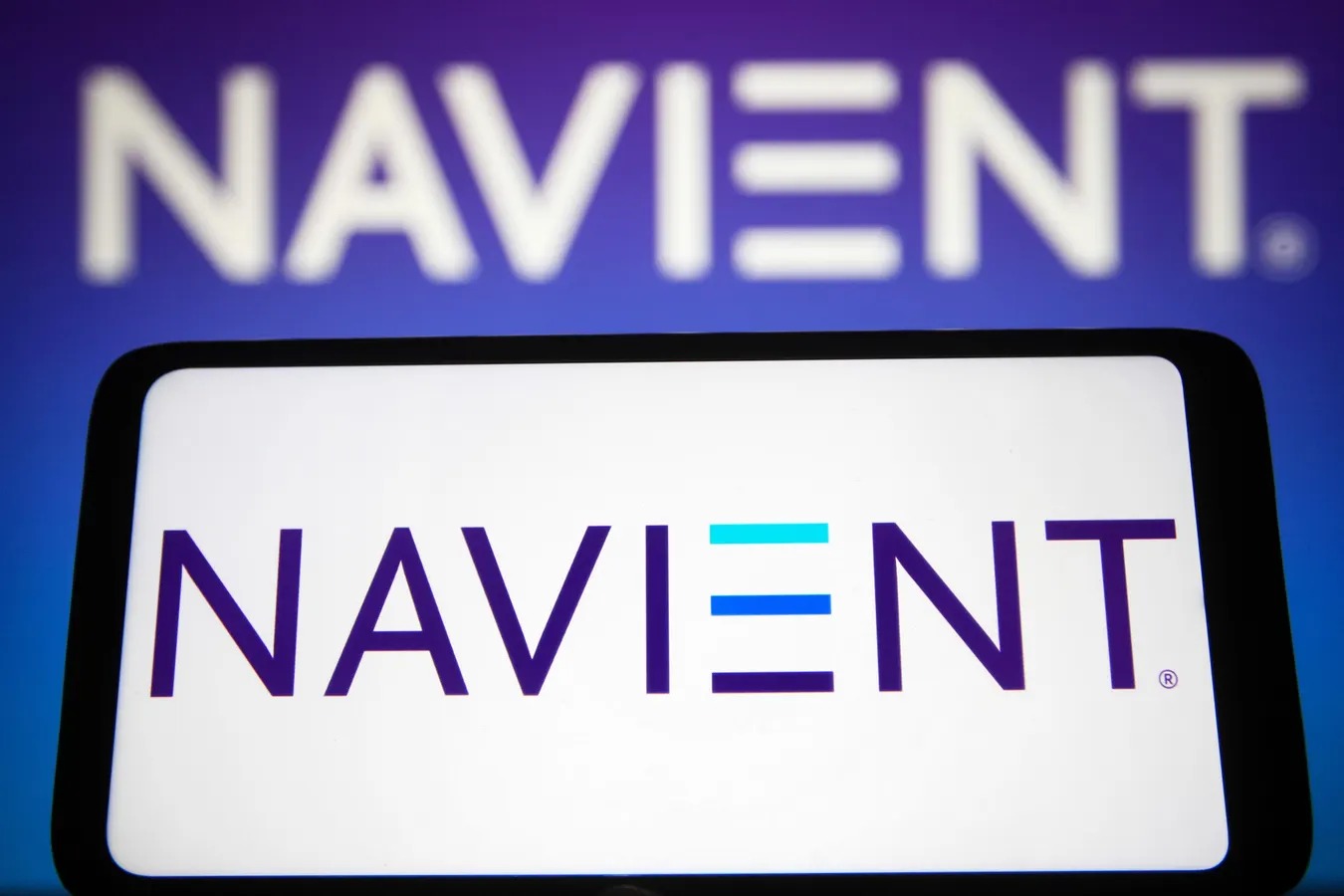

Finance
Who Bought Out Navient Student Loans
Published: January 20, 2024
Find out who bought out Navient student loans and get the latest updates in the world of finance. Stay informed and make the right financial decisions for your future.
(Many of the links in this article redirect to a specific reviewed product. Your purchase of these products through affiliate links helps to generate commission for LiveWell, at no extra cost. Learn more)
Table of Contents
- Introduction
- Understanding Navient Student Loans
- Why would someone buy out Navient student loans?
- Who are the potential buyers of Navient student loans?
- Case studies of companies that have bought out Navient student loans
- Benefits and drawbacks of buying out Navient student loans
- How does the process of buying out Navient student loans work?
- Conclusion
Introduction
Navient Corporation is one of the largest student loan servicers in the United States, responsible for managing and servicing student loans for millions of borrowers. However, there are instances where individuals or organizations seek to buy out Navient student loans. This may seem like an intriguing concept, but it is not uncommon in the world of finance. In fact, buying out student loans can present various opportunities for both borrowers and investors.
Understanding the dynamics of Navient student loans is crucial to comprehend why someone would consider buying them out. Navient, originally formed as a spin-off from Sallie Mae, specializes in servicing both federal and private student loans. They facilitate the repayment process, collecting payments and managing the overall loan portfolio on behalf of the lenders.
There are several reasons why someone might be interested in buying out Navient student loans. One of the main motivations is the potential for financial gain. By purchasing student loans from Navient, investors can gain access to a steady income stream generated by the interest paid by borrowers over time. Additionally, buying out student loans provides an opportunity to diversify investment portfolios and potentially benefit from the overall growth of the education loan market.
So, who are the potential buyers of Navient student loans? The answer is not limited to just one type of entity. Various individuals and organizations, such as private equity firms, financial institutions, and even other loan servicers, may be interested in acquiring Navient loans. These potential buyers have their own unique strategies and reasons for seeking to buy out Navient.
In this article, we will delve deeper into the concept of buying out Navient student loans. We will examine notable case studies of companies that have successfully completed such acquisitions. Furthermore, we will discuss the benefits and drawbacks of buying out Navient student loans, as well as the overall process involved. By the end, you will gain a comprehensive understanding of this intriguing aspect of the finance industry.
Understanding Navient Student Loans
Navient student loans are a type of debt that is provided to individuals to fund their higher education expenses. These loans are managed and serviced by Navient Corporation, which is a major player in the student loan industry. It is important to have a clear understanding of how Navient student loans work to better comprehend the reasons behind buying them out.
Navient offers both federal and private student loans. Federal student loans are loans provided by the government and typically have lower interest rates and more flexible repayment options. Private student loans, on the other hand, are offered by banks, credit unions, and other financial institutions.
Navient acts as the intermediary between the borrower and the lender, facilitating the borrowing process, loan disbursement, and repayment. They collect monthly payments from borrowers, allocate the payments to various loan accounts, and manage any additional features or benefits associated with the loans.
It is important to note that Navient is not the original lender. They acquire the loans from other financial institutions, such as banks or the federal government. Once Navient acquires the loans, they become the loan servicer, responsible for managing all aspects of the loan until it is fully repaid.
Navient student loans have different repayment plans, including standard repayment, income-driven repayment, and extended repayment. Standard repayment requires borrowers to make fixed monthly payments over a specified period of time, typically 10 years. Income-driven repayment plans adjust the monthly payment based on the borrower’s income and family size, ensuring that the payments remain affordable. Extended repayment plans allow borrowers to extend the repayment period up to 25 years, resulting in lower monthly payments but potentially higher overall interest costs.
Interest accrues on Navient student loans based on the terms of the loan agreement. It is important for borrowers to understand the interest rate, which can be fixed or variable, as it directly affects the total amount repaid over the life of the loan.
By understanding the intricacies of Navient student loans, individuals and organizations can make informed decisions about whether to buy out these loans. The next section will explore the motivations behind buying out Navient student loans and who the potential buyers might be.
Why would someone buy out Navient student loans?
There are several motivations that might lead someone to consider buying out Navient student loans. Let’s explore some of the key reasons behind this decision:
1. Profit Potential:
One of the primary reasons for buying out Navient student loans is the potential for financial gain. When an individual or organization buys out these loans, they essentially become the new lender or loan servicer. This means they have the opportunity to earn interest on the outstanding loan balances as borrowers make their monthly payments. Over time, this can result in a steady stream of income generated from the interest accrued on the loans.
2. Diversification of Investment Portfolio:
Investing in Navient student loans can be an effective way to diversify an investment portfolio. By adding student loans to the mix, investors can allocate their funds across different asset classes, reducing the overall risk. This diversification can be particularly beneficial if the investor already has exposure to other types of investments, such as stocks, bonds, or real estate.
3. Confidence in the Education Loan Market:
Buying out Navient student loans demonstrates confidence in the education loan market. Despite the ever-increasing cost of education, student loans have historically been a reliable and profitable investment. By acquiring these loans, investors are expressing their belief that borrowers will continue to repay their loans over time, thereby generating returns on their investment.
4. Strategic Business Opportunities:
Sometimes, companies in related industries may see buying out Navient student loans as a strategic business opportunity. For example, a loan servicing company might seek to expand its portfolio by acquiring the loans serviced by Navient. This allows them to increase their market share and potentially offer additional services to borrowers.
5. Mitigating Risk:
Borrowers may also choose to buy out Navient student loans as a means of mitigating risk. By taking over the loans, they have the ability to renegotiate the terms, such as the interest rate or repayment plan, to better suit their financial situation. This can result in lower monthly payments or potentially save on interest costs.
These motivations provide a glimpse into why someone might be interested in buying out Navient student loans. In the next section, we will explore the potential buyers of Navient student loans and the types of entities that engage in these acquisitions.
Who are the potential buyers of Navient student loans?
When it comes to buying out Navient student loans, there is a diverse range of potential buyers. These buyers come from various backgrounds and have different motivations for acquiring these loans. Let’s take a closer look at some of the potential buyers of Navient student loans:
1. Private Equity Firms:
Private equity firms are known for their ability to identify and invest in opportunities with the potential for strong financial returns. These firms often have access to significant capital, which they can use to acquire and manage a variety of assets, including Navient student loans. For them, buying out these loans presents an opportunity to generate a steady stream of income through the interest paid by borrowers.
2. Financial Institutions:
Financial institutions, such as banks and credit unions, are potential buyers of Navient student loans. These institutions have the infrastructure and experience to manage loan portfolios, making them well-suited for acquiring and servicing student loans. By purchasing Navient student loans, financial institutions can expand their lending activities, diversify their loan portfolios, and potentially capitalize on the long-term growth of the education loan market.
3. Loan Servicers:
Other loan servicers may also be interested in buying out Navient student loans. These loan servicers may already have an existing portfolio of loans and seek to expand it by acquiring loans managed by Navient. By acquiring these loans, loan servicers can increase their client base and potentially offer additional services to borrowers, further strengthening their position in the market.
4. Institutional Investors:
Institutional investors, such as pension funds, insurance companies, and hedge funds, are another potential category of buyers for Navient student loans. These investors often have long investment horizons and are seeking stable, income-generating assets. By including student loans in their investment portfolios, institutional investors can diversify their holdings and potentially achieve attractive risk-adjusted returns.
5. Individuals and Corporations:
While larger entities like private equity firms and financial institutions may dominate the market for buying out Navient student loans, there are also individual investors and corporations that engage in these acquisitions. These individuals may see purchasing student loans as a way to earn a passive income stream or as an opportunity to support education initiatives by helping borrowers better manage their debt.
These potential buyers showcase the wide array of entities that may be interested in buying out Navient student loans. In the next section, we will explore case studies of companies that have successfully completed these acquisitions, shedding light on the practicality of such transactions.
Case studies of companies that have bought out Navient student loans
There have been several notable case studies of companies successfully buying out Navient student loans. These examples highlight the diverse range of entities that have engaged in these acquisitions and the benefits they have derived from such investments. Let’s explore some of these case studies:
1. Nelnet
Nelnet is a leading student loan servicer and one of the most active buyers of Navient student loans. In recent years, Nelnet has acquired millions of dollars’ worth of student loans from Navient. By acquiring these loans, Nelnet has been able to expand its student loan portfolio and increase its market share in the loan servicing industry. This acquisition has allowed Nelnet to diversify its revenue streams and capitalize on the growing demand for student loan services.
2. PEAK6 Investments
PEAK6 Investments, a Chicago-based investment firm, made headlines when it partnered with Värde Partners to acquire a significant portion of Navient’s student loan portfolio. This acquisition allowed PEAK6 to enter the student loan market and capitalize on the potential returns generated by student loan repayments. By diversifying their investment portfolio and expanding into the student loan space, PEAK6 Investments demonstrated their confidence in the market and their ability to identify profitable investment opportunities.
3. Social Finance (SoFi)
SoFi, a prominent online personal finance company specializing in student loan refinancing and other financial products, has also made strategic moves to buy out Navient student loans. By acquiring these loans, SoFi aims to strengthen its position as a leading player in the education loan market. This acquisition provides SoFi with an opportunity to expand its customer base and offer more competitive refinancing options to borrowers looking to optimize their student loan repayment strategies.
4. State and Municipal Governments
State and municipal governments have also participated in buying out Navient student loans. For instance, the state of California established the California Public Finance Authority (CPFA), a state-run authority dedicated to purchasing private student loans from Navient. The aim of this initiative is to help California residents refinance their loans at more favorable terms and alleviate the burden of student loan debt. Through this program, the state government provides a valuable service to borrowers and stimulates economic growth by enabling individuals to better manage their education loan obligations.
These case studies highlight the wide range of entities that have engaged in buying out Navient student loans. Whether it’s established servicers, investment firms, online finance companies, or even governmental bodies, these examples demonstrate the opportunities and benefits that can arise from acquiring Navient student loans. In the next section, we will explore the advantages and drawbacks of buying out Navient student loans to provide a balanced perspective on this financial strategy.
Benefits and drawbacks of buying out Navient student loans
Buying out Navient student loans can present a range of benefits as well as drawbacks. It is important to understand both sides of the equation before making a decision. Let’s explore the advantages and drawbacks of buying out Navient student loans:
Benefits:
1. Steady Income Stream:
By buying out Navient student loans, investors can gain access to a consistent income stream generated by borrower interest payments. This can provide a reliable source of cash flow over time and potentially yield attractive returns on investment.
2. Diversification of Portfolio:
Investing in Navient student loans allows for portfolio diversification. By adding this asset class to an investment portfolio, investors can reduce risk by spreading their funds across different types of assets and industries.
3. Potential for Financial Gain:
Navient student loans offer the potential for financial gain through interest income. As borrowers make monthly repayments, the investor earns interest on the outstanding loan balances, which can result in long-term profitability.
4. Contributing to Education Access:
Buying out Navient student loans provides an opportunity to contribute to education access and support borrowers’ repayment journey. By acquiring these loans, investors can play a role in helping individuals manage their student loan debt and achieve financial stability.
Drawbacks:
1. Risk Considerations:
As with any investment, there are inherent risks involved in buying out Navient student loans. Economic downturns, changes in borrower circumstances, or regulatory changes can impact the repayment rates and overall profitability of these loans.
2. Loan Default Possibility:
There is always a risk that borrowers may default on their student loans, resulting in potential loss of principal and interest for the investor. Loan default rates can be influenced by various factors, such as a weak job market or changes in borrower repayment behaviors.
3. Loan Servicing and Management:
Managing and servicing student loans can be complex and require expertise in loan administration. Buyers must ensure they have the necessary resources and infrastructure to effectively handle loan servicing, including collecting payments, managing borrower accounts, and addressing any borrower concerns or inquiries.
4. Regulatory Considerations:
The student loan industry is subject to various regulations and government policies that can impact the terms and conditions of Navient student loans. Buyers must stay abreast of these regulations and be prepared to adapt their strategies and operations accordingly.
It is important to carefully weigh the benefits and drawbacks of buying out Navient student loans and conduct thorough due diligence before making any investment decisions. By doing so, individuals and organizations can make informed choices that align with their financial goals and risk tolerance levels.
In the next section, we will delve into the process of buying out Navient student loans and explore the steps involved in these acquisitions.
How does the process of buying out Navient student loans work?
The process of buying out Navient student loans involves several steps and considerations. While the specifics may vary depending on the buyer and the circumstances, the following is a general overview of how the process typically works:
1. Identifying Potential Loans:
The first step in buying out Navient student loans is identifying the loans that are of interest for acquisition. This involves performing due diligence on Navient’s loan portfolio, assessing factors such as loan type, outstanding balances, interest rates, and repayment histories. This information helps potential buyers evaluate the potential profitability and risks associated with the loans.
2. Negotiating the Purchase Agreement:
Once potential loans have been identified, buyers enter into negotiations with Navient to determine the terms of the purchase agreement. This includes the purchase price, the transfer of loan servicing responsibilities, and any other relevant terms and conditions. It is crucial to ensure that the agreement outlines all rights, responsibilities, and obligations of both parties.
3. Conducting Due Diligence:
Before finalizing the purchase agreement, buyers typically conduct a thorough due diligence process. This includes reviewing loan documentation, borrower information, and loan performance data to assess the accuracy of information provided by Navient and to identify any potential issues or risks associated with the loans.
4. Obtaining Financing:
Buyers may need to secure financing to fund the acquisition of Navient student loans. This could involve raising capital through private investors, obtaining a loan from a financial institution, or using other financing arrangements. It is essential to have the necessary financial resources in place before proceeding with the purchase.
5. Transferring Loan Ownership:
Upon reaching an agreement and obtaining financing, the buyer and Navient proceed with the transfer of loan ownership. This includes the legal transfer of loan rights, documentation, and borrower information. The details of the loan transfer process will be outlined in the purchase agreement, and it is important to ensure compliance with any applicable regulatory requirements.
6. Managing Loan Servicing:
After the successful acquisition, the buyer assumes responsibility for loan servicing, including collecting borrower payments, managing borrower accounts, and addressing any borrower inquiries or concerns. This requires establishing the necessary infrastructure to effectively manage and service the acquired loans.
7. Monitoring and Optimizing Performance:
Once the Navient student loans are acquired and being serviced, buyers must actively monitor their performance and take steps to optimize their returns. This includes closely tracking borrower repayment behaviors, evaluating the effectiveness of loan servicing strategies, and implementing any necessary adjustments to maximize profitability and mitigate risks.
The process of buying out Navient student loans requires careful planning, analysis, and collaboration between the buyer and Navient. It is essential to adhere to legal, regulatory, and compliance requirements throughout the entire process. By following these steps, buyers can navigate the complexities of acquiring Navient student loans and position themselves for success in this unique financial market.
With a comprehensive understanding of how the process works, we can now conclude our analysis in the next section.
Conclusion
Buying out Navient student loans can be an attractive option for individuals and organizations looking to diversify their investment portfolio, generate a steady income stream, and contribute to the education loan market. Throughout this article, we have explored the various aspects of buying out Navient student loans, including the motivations behind such acquisitions, the potential buyers involved, notable case studies of successful acquisitions, and the benefits and drawbacks associated with this financial strategy.
By purchasing Navient student loans, investors can gain access to a reliable income stream generated by borrower interest payments, diversify their investment portfolios, and potentially contribute to education access and affordability. However, it is important to consider the risks involved, such as potential loan defaults and the complexities of loan servicing and management.
Various entities, including private equity firms, financial institutions, loan servicers, and even individual investors, have engaged in buying out Navient student loans. Through case studies, we have seen how these acquisitions have allowed companies like Nelnet, PEAK6 Investments, and SoFi to expand their market presence, diversify their loan portfolios, and create new business opportunities.
The process of buying out Navient student loans involves steps such as identifying potential loans, negotiating the purchase agreement, conducting due diligence, securing financing, transferring loan ownership, managing loan servicing, and monitoring performance. It requires careful planning, meticulous analysis, and adherence to legal and regulatory requirements.
As with any investment strategy, it is crucial to thoroughly assess the benefits and drawbacks, perform adequate due diligence, and align the decision with one’s financial goals and risk tolerance. Buying out Navient student loans can be a rewarding endeavor for those who are well-informed and prepared to navigate the nuances of the education loan market.
Overall, the option to buy out Navient student loans presents an opportunity to participate in the financial landscape surrounding education debt. Whether driven by profit potential, diversification, or a desire to contribute to education access, buyers in this market can make a meaningful impact while potentially achieving attractive returns. As the student loan industry continues to evolve, the decision to buy out Navient student loans will be influenced by changing economic conditions, regulatory aspects, and the ever-present need for responsible and sustainable lending practices.














